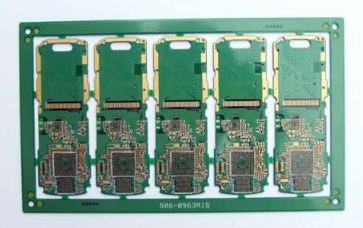PCB screen printing specifications and requirements
1. All components, mounting holes, and positioning holes have corresponding silk-screen marks. In order to facilitate the installation of the board, all components, mounting holes, and positioning holes have corresponding silk-screen marks. The mounting holes on the PCB board are printed with H1, H2……Hn for identification.
2. Silk-screen characters follow the principle of left-to-right and bottom-up. Silk-screen characters should follow the principle of left-to-right and bottom-up as far as possible. For devices with polarities such as electrolytic capacitors and diodes, try to keep them in each functional unit. The direction is the same.
3. There is no silk screen on the device pad and the tin track that needs to be tinned, and the device position number should not be blocked by the device after installation. (The density is higher, except for those that do not need to be silk-screened on the PCB)
In order to ensure the reliability of the soldering of the device, it is required that there is no silk screen on the device pad; in order to ensure the continuity of the tin channel, it is required that there is no silk screen on the tin channel; The device is blocked after installation; the silk screen should not be pressed on the vias and pads, so as not to cause part of the silk screen to be lost when the solder mask is opened, which affects identification. The silk screen spacing is greater than 5mil.
4. The polarity of the components with polarity is clearly indicated on the silk screen, and the polarity direction mark is easy to identify.
5. The direction of the directional connector is clearly indicated on the silk screen.
6. There should be a barcode position mark on the PCB. When the PCB board space permits, there should be a 42*6mm barcode silk screen frame on the PCB. The position of the barcode should be considered for easy scanning.

7. PCB board name, date, version number and other finished board information silkscreen position should be clear. The PCB file should be printed with the board name, date, version number and other information of the finished board, and the position is clear and eye-catching.
8. Complete relevant information and anti-static signs of PCB manufacturers.
9. The number of PCB light drawing files is correct, each layer should have the correct output, and there should be a complete output of the number of layers.
The identifier of the device on the multilayer PCB must be consistent with the identification symbol in the BOM list.
Ink:
Viscosity: Viscosity refers to the relative movement between adjacent fluid layers when the fluid is flowing, then frictional resistance will be generated between the two fluid layers; unit: Pascal seconds (pa.s).
Hardness: The hardness of the ink after the pre-bake is 2B, the hardness of the ink after the exposure is 2H, and the hardness of the ink after the post-bake is 6H. Pencil hardness.
Thixotropic (thixotropic): the ink is gelatinous when standing, but the viscosity changes when touched. It is also called thixotropic and sag resistance; it is a physical property of the liquid, that is, under agitation. Its viscosity drops and restores its original viscosity characteristics quickly after standing still. Through stirring, the effect of thixotropy lasts for a long time, enough to rebuild its internal structure. To achieve high-quality screen printing results, the thixotropy of the ink is very important. Especially in the process of squeegee, the ink is agitated to make it liquefied. This effect accelerates the speed of ink passing through the mesh, and promotes the uniform connection of the ink separated by the mesh. Once the squeegee stops moving, the ink returns to a static state, and its viscosity quickly returns to the original required data.
Dry film consists of three parts and ingredients:
Support film (polyester film, Polyester)
Photo-resist Dry Film
Cover film (Polyethylene film, Polyethylene)
Main components 1. Binder binder (film-forming resin), 2. Photo-polymerization monomer Monomer, 3. Photo-initiator, 4. Plasticiser, 5. Adhesion Promoter, 6. Thermal polymerization inhibitor, 7. Dye 8. Solvent
The dry film types are divided into three categories according to the dry film development and removal methods: solvent-based dry film, water-soluble dry film and peel-off dry film; according to the purpose of the dry film, it is divided into: resist dry film, mask dry film and resist Welding dry film.
Photosensitive speed: refers to the amount of light energy required for the photoresist to polymerize the photoresist to form a polymer with a certain resistivity under the irradiation of ultraviolet light. Under the condition of fixed light source intensity and lamp distance, Sensitivity speed is expressed as the length of exposure time. Short exposure time means fast sensitivity.
Resolution: refers to the number of lines (or spacing) that can be formed by the dry film resist within a distance of 1mm. The resolution can also be expressed by the absolute size of the lines (or spacing).